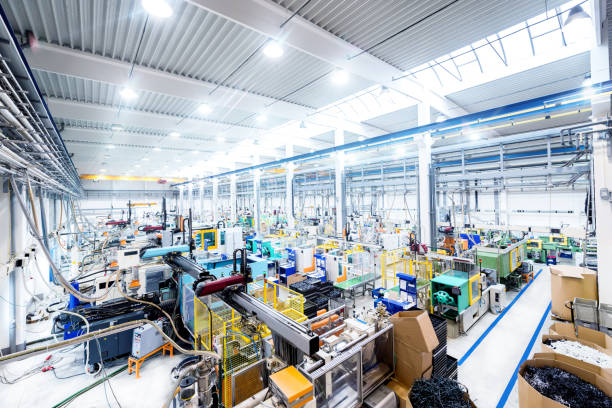Contents
- 1 Introduction
- 2 1. Benefits of Remote Work
- 3 2. Impact of cloud computing
- 4 3. Automation and AI
- 5 4. Data Analytics and Insights
- 6 5. Digital communication tools
- 7 6. Virtual Reality and Augmented Reality
- 8 7. Blockchain Technology
- 9 8. Internet of Things (IoT)
- 10 9. Cybersecurity and Data Protection
- 11 10. Flexible workplaces.
- 12 11. Human Machine Collaboration
- 13 12. Personalized learning and development
- 14 13. Smart Automation Tools
- 15 14. Employee Welfare Technologies
- 16 15. Future Trends and Forecasts
- 17 Conclusion
Introduction
Today we discuss Technology in Shaping the Future of Work and Productivity In today’s era, the influence of technology has expanded into every field, and work and productivity have not stopped.
As technology has evolved the work environment into new tools and techniques, the future of work is also changing. These articles will explore the aspects of technology that are playing a role in shaping the future of work and productivity.
1. Benefits of Remote Work

The concept of remote work has become very popular thanks to technology. With the help of the Internet and collaboration tools, people can work from home. It increases flexibility and helps employees maintain a work-life balance. With remote work, companies can hire global talent, which can leverage diverse perspectives and skills.
2. Impact of cloud computing
Distributed computing permits organizations to remotely get to their information and applications. This innovation improves on information capacity and the board, and permits colleagues to team up anyplace, whenever. The scalability and flexibility of cloud services increases productivity and also reduces costs.
3. Automation and AI
Automation and artificial intelligence (AI) have revolutionized the automation of non-repetitive tasks.
These technologies eliminate human error and improve efficiency. AI-powered tools like chatbots and virtual assistants improve customer service, while automation streamlines manufacturing and logistics. Using them allows employees to focus on complex and creative tasks.
4. Data Analytics and Insights
With the help of data analytics, businesses can better understand their operations and performance.
Advanced analytics tools identify trends and patterns that make decision-making more informed. Real-time data insights help monitor and increase productivity, supporting strategic planning and forecasting.
5. Digital communication tools
Digital communication tools like video conferencing and instant messaging have made collaboration easier and more efficient. Platforms like Zoom, Microsoft Teams and Slack help remote teams connect and facilitate seamless communication.
These tools support virtual meetings and brainstorming sessions, accelerating innovative ideas and projects.
6. Virtual Reality and Augmented Reality
Virtual Reality (VR) and Augmented Reality (AR) are carried over to training and development. VR simulation and AR provide employees with hands-on experience and interactive learning opportunities.
These technologies make the world of work richer and more engaging, enhancing skills development and employee satisfaction.
7. Blockchain Technology

Blockchain technology has introduced security and transparency in the work process. Smart contracts and decentralized applications (DAPPs) make transactions or data exchanges secure and efficient. Blockchain is also used to streamline supply chain management and financial transactions, increasing productivity and reliability.
8. Internet of Things (IoT)
Internet of Things (IoT) devices are making the work environment smart and interconnected. IoT sensors and devices provide real-time data that helps improve operational efficiency and resource management. Smart offices and connected machines improve productivity and reduce operational costs.
9. Cybersecurity and Data Protection
Using cybersecurity technologies is essential to protect sensitive data and business information. Advanced security measures and encryption techniques provide protection against hackers and cyber threats.
Strong data protection measures can help companies keep their operations secure and uninterrupted, helping to maintain productivity.
10. Flexible workplaces.
Technology has popularized flexible workplaces, where employees work at their own comfort and productivity.
Hot desking and co-working spaces are managed by technology, making work environments dynamic and adaptable. This approach helps boost productivity and creativity.
11. Human Machine Collaboration
Advanced robotics and AI technologies are being used to improve human-machine collaboration. Robots and machines handle repetitive and efficient tasks, while humans focus on creative and decision-making tasks. Can collaboration improve performance and safety?
12. Personalized learning and development
Technology is being used to create personalized learning and development programs that address the individual needs and skills of employees.
E-learning platforms and adaptive learning systems deliver tailored learning experiences that enhance skill development and career advancement.
13. Smart Automation Tools
Smart automation tools such as RPA (Robotic Process Automation) automate repetitive business processes.
These improve the performance of the tools and reduce the error rate. Using RPA to automate administrative tasks allows employees to focus on strategic and high-value tasks.
14. Employee Welfare Technologies
Employee wellness technologies such as health monitoring apps and mental health support tools indirectly boost productivity.
These technologies help track and improve the physical and mental health of employees. Healthy and happy employees ensure better work performance and productivity.
15. Future Trends and Forecasts

Technology will become even more advanced in the coming days, and its impact on the future of work and productivity will become even greater.
Emerging technologies such as quantum computing and 5G will introduce new possibilities and efficiencies in networks. By understanding future trends, businesses can adapt their strategies and maximize productivity.
Conclusion
Technology in Shaping the Future of Work and Productivity The role of technology is changing in the future of work and productivity. Advances such as remote work, cloud computing, automation, and AI have innovated ways of working and improved efficiency.
Effective use of technology enables businesses to increase their productivity and efficiency. Technology is expected to have an even greater impact in the future, making the workplace environment even more dynamic and productive.





